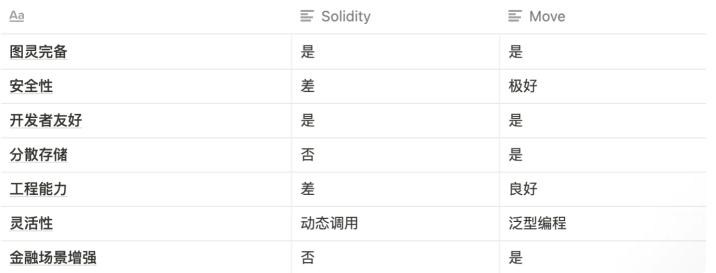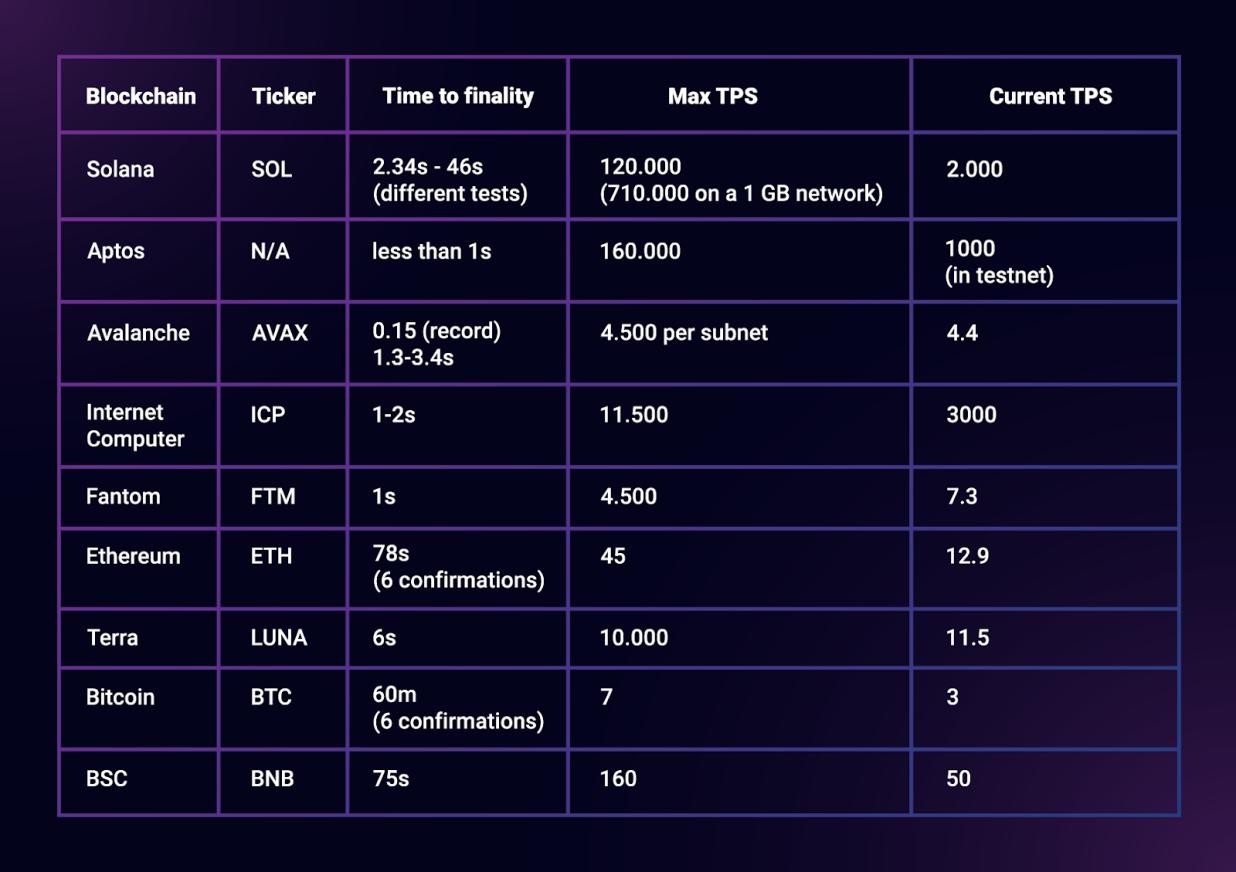Since the birth of the blockchain, the entire industry has gone through several rounds of cycles. Ethereum, which currently has the richest ecology and the greatest influence, has been criticized due to performance and cost issues, and has been constantly challenged by rising stars in the cycle.
In the last cycle, a batch of new Layer1 projects emerged, such as Solana, Polygon, Fantom, and Near, etc., all trying to make some improvements and explorations on the underlying public chain.
As the cycle enters a new bear market, a new wave of public chains is emerging. Among them, the most concerned ones are undoubtedly the Libra projects using the Move programming language: Aptos and Sui.
In 2019, Facebook (now renamed Meta) at the time announced the launch of Libra (later renamed Diem), a cryptocurrency circulating globally. Later, due to regulatory and other issues, the Libra project failed to take shape. But this also made the team realize that in order to truly establish an innovative Web3 project, it must completely break out of the traditional field and enter the encryption field.
The developers of Aptos and Sui were both the core developers of Libra. They inherited the programming language in the Libra project - the Move language, and built these two new public chains.
first level title
Move language
asset security
asset security
Almost every blockchain project has its own encrypted assets. The value growth of assets is not only the result of project development, but also the driving force of project development. Asset security should have been the top priority of project development. However, the frequent incidents of asset theft and asset loss in the encryption industry make many investors who have not yet entered the industry daunting.
According to statistics from SlowMist, there will be about 100 DeFi security incidents in the first half of 2022, with a loss of over US$1.63 billion, among which project defects and contract loopholes are the top four reasons.
Move is a language for operating digital assets. Initially, the Facebook team developed the Move language to serve Diem and create a global financial and currency infrastructure. So Move must have the ability to encode the various assets and business logic that make up the financial infrastructure.
In the Move language, more emphasis is placed on assets and resources. In their parlance, it is "First-class resources". Solidity, like most programming languages, treats Token or encrypted assets as a value, and the process of asset transfer is realized by adding and subtracting the value of the account. For example, if Alice wants to transfer 10 tokens to Bob, Alice’s The balance is -10, and then Bob's balance is +10. In the process of adding and subtracting multiple asset accounts, security vulnerabilities are prone to occur, and the rigor of the code must be relied on to ensure property security.
But in move language, asset is redefined as a resource (resource) type, no longer a string or numeric variable. The Move programming language abstracts four attributes of resources, which can be copied (copy), indexed (key), discarded (drop), and stored (store). Through different combinations of these four attributes, users can easily define Any type of resource.
The concept of resource priority provides a great help for programmers to write safe and efficient code. As Damir, a programming engineer on the development team at SUI, puts it: "Once you start thinking like objects, rather than abstract thinking like building on programming primitives like hash maps, you'll know what you're doing all the time. , as in infinitely expressive and articulated types—what was, what is now.” This design makes manipulation of resources more concrete and visible.
Move also defines some resource properties:
Such as binding with an account. Resource data must be bound under the account, so the corresponding Resource asset will exist only after the account is allocated, and as long as the Resource is taken out, it must have a destination, either passing it as a return value that flows to an account, or directly its destruction. It can be understood that the Token movement of Move is a transfer, from one account to another, while Solidity is addition and subtraction, first subtracting in one place, and then adding in another.
Then there is access to assets. In Solidity, data is stored centrally in the contract. When there is a loophole in the contract, once the hacker obtains the contract authority, all user data will be attacked.
Whereas in Move, data is stored in the account that owns it, not in a contract. There are many modules in Move, and modules are programs that can create, transfer, and store assets, similar to smart contracts in Ethereum. Move specifies that only public module functions can be accessed by other modules.
secondary title
Architecture security
Move has learned experience and lessons from Solidity's security incidents. On the basis of Solidity, it has added many features and made great innovations in the underlying security design, making the system more secure and reliable.
The Move language has several characteristics:
static call. So what is a static call? Static calls are the opposite of dynamic calls. When a program calls another program, if the called target cannot be determined until runtime, the call is called dynamic call; conversely, if the program can determine the called target before running and cannot be changed at runtime target, the call is called a static call.
The calls in Solidity are all implemented through dynamic calls. Since the calling object cannot be determined, it may cause circular calls, which brings great security risks. For example, TheDAO attack and PolyNetwork cross-chain attack are similar events.
The Move language draws on these lessons and chooses the design of static calls, which reduces the possibility of program crashes during runtime.
Formal verification. Formal verification is to prove the security of the program through mathematical means. The Move team has developed the Move Prover tool for users, which can use mathematical means to test and prove the reliability of the contract. Developers can run the test in a few minutes, enabling them to find errors in the code before deployment.
image description

Image source: BuilderDao
first level title
secondary title
Aptos
From the perspective of development progress, ecological richness, and financing progress, Aptos is currently the leading project in the new public chain of the Move series.
In March of this year, Aptos completed a financing of US$200 million, also led by a16z. Participating parties include Tiger Global, Multicoin Capital, FTX Ventures, Coinbase Ventures, Binance Labs and other top institutions. On July 25 this year, Aptos completed another US$150 million financing, led by FTX Ventures and Jump Crypto, and participated by a16z, Multicoin Capital and Circle Ventures. In less than half a year, Aptos raised US$350 million.
status quo
status quo
On March 15 this year, Aptos released the developer testnet. In May, it launched the Incentive Testnet (AIT1), which provides developers and partners with a test platform similar to the mainnet. Participants provide incentives.
According to Aptos' roadmap, there are 4 rounds of incentive testnet, namely:
-AIT1: Decentralized startup
-AIT2: Pledge
-AIT3: Governance and Escalation
- AIT4: dynamic validator topology
The Aptos Incentivized Testnet 2 (AIT2) starts on July 1st and ends on July 22nd with the theme of staking. A total of more than 225 community nodes participated in AIT2, and these nodes are distributed in 44 countries and 110 cities around the world. Each successful participant receives 500 Aptos tokens. Additionally, the top 10% of voting nodes get an additional 200 Aptos tokens.
Aptos Incentivized Testnet 3 (AIT3) will run from August 30th to September 9th, with the theme of governance and upgrades.
Aptos said in a blog post that its test network has reached more than 20,000 nodes. At the same time, the test network can verify and synchronize more than 10,000 transactions per second (TPS), with sub-second latency, and is moving to more than 100,000 TPS. step forward.

safety
safety
In addition to using the safer Move language as the development language, in terms of consensus, Aptos has adopted the optimized Byzantine consensus "Proof-Of-Stake Diem BFT", and has carried out four consensus iterations in the past three years. To achieve high transaction throughput, low latency and more energy efficient.
Aptos' BFT protocol keeps the network running smoothly while also maintaining world-class speeds. Aptos uses a reputation system to update validator rotation and uses a "pacemaker" to synchronize votes. The system fully validates transactions in less than a second (a measure commonly referred to as "time to finalization"), making it one of the fastest blockchains in production.
scalability
scalability
Aptos argues that Layer 1 blockchains should take on more responsibility for "scalability" so that mainstream adoption can increase. In its plan to improve throughput and finality speed, Aptos plans to completely separate the consensus protocol from transaction execution to speed up transaction broadcasting.
Upgradability
Upgradability
ecology
ecology
Aptos hosts an Aptos Hackathon. At the end of June this year, Aptos launched a US$200 million ecosystem funding plan. The funding categories include 6 categories, namely developer tools, SDKs, libraries, documentation, guides, and tutorials; tools and tools for development, governance, DeFi, and NFT Framework; core protocol contributions: token standards, libraries, protocol upgrades, etc.; open source and public products; educational initiatives; applications.
secondary title

Sui
In December 2021, Sui, the earliest start-up in the Move public chain, announced a $36 million Series A financing, with investors including a16z and NFX, Scribble Ventures, Redpoint, Lightspeed, Electric Capital, Samsung NEXT, Slow Ventures, Standard Crypto, Coinbase Ventures wait. On July 12 this year, it was revealed that Sui was seeking US$200 million in Series B financing, with a valuation of US$2 billion.
Sui's development team is Mysten Labs, who designed their own high-performance Layer 1 proof-of-stake (PoS) blockchain Sui, which was released in March this year.
Like Aptos, Sui also uses Diem's development language Move, but Sui's object model is slightly different from Aptos. At present, Sui has released their economic white paper, but the development progress is slow.
In terms of the use of the Move language, Sui has upgraded and adjusted it so that the language can write smart contracts for both homogeneous encrypted assets (FT) and non-homogeneous (NFT) assets.
In terms of scalability related to network performance, Sui focuses on transaction parallelization, that is, the network can process multiple transactions at the same time. In most blockchains, blockchain transactions must occur sequentially, and often there is no connection or dependency between these transactions. This limits the scaling of transaction volume. And Sui can lock the relevant data of a transaction and realize independent verification, so as to complete the parallel processing of transactions.
status quo
status quo
ecology

ecology
epilogue
epilogue
Based on the experience and lessons of Solidity, the Move language has carried out various innovations and improvements, which has greatly improved its security and is more suitable for the development of smart contracts. The new public chains based on the Move language have also brought more room for imagination to the development of Layer1. As top investment institutions have entered the game one after another, it is still unknown who will win the public chain track.